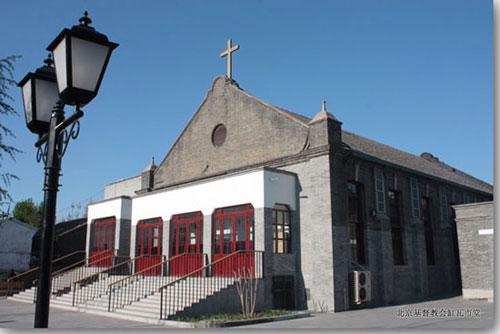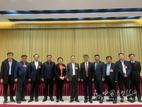Since the first protestant missionary Morrison came into China in1807, the birth and the development of Christianity (protestant) in China has been 200 years. Looking back this more than 200 years history, "localization" is one of the main tones in China's Christianity. At the same time, in the process of observation of the development of Christianity in China, another dimension which should not be ignored is the "publicity". Because Christian churches focus on saving souls as well as the "holy catholic".
After the reform and opening up, along with the vigorous development of the local Christianity and the social opened up, Christianity has been quietly experiencing the process of "publicity" in China step by step over the past 30 years.
In 1949, when new China founded, Chinese Christian figures were only 700,000, less than 0.2% in four hundred million China's population. It was one of the marginal groups. Then in the last 30 years, the social environment has been tighter with religion, and kept "taking class struggle as key link". Regardless of talking about religion, the living space is very limited in many aspects, especially the one-sided understanding of religion bringing full control of religion; at that time, a region even has advocated "no religion, no religious county" and done "eliminating religion" test, in which Christianity also suffered pain and persecution. During that time, the church buildings were burnt, the clergymen were put into prison, and believers did not dare to talk about belief in public. All of those had become the historical record.
With Small amount and large persecution for a long time, Christians was kept in the edge position and had to be underground. Faith practice could only be limited to the most personal environment, so the house church appeared. On one hand, it helped the Christian church keep the seeds of local religious beliefs in difficult circumstances. On the other hand, it also explained that there was no public space in the circumstances at that time and the "publicity" of Chinese Christian church is also impossible.
The Third Plenary Session of the 11th Central Committee of the Communist in 1978 established the ideological line of "seek truth from facts". At that time the "left" errors in matters of religion were removed. This helped to carry out the policy of religious belief freedom. The NO.19 file in 1982 was seen to be a landmark event. On March 31, 1982, the central committee of the communist party of China issued the basic idea and the basic policy about our religion in the socialist period. This is the first systematical file that specialized on religious issues set up by government after the founding of People's Republic of China, and it illustrates the basic ideas of religion and the basic policy.
Since then, the church closed for decades reopened. The Chinese Christian have legal space for public congregation again, and believers can also declare their Christian identity and talk about belief with each other. The development of Christianity in China has experienced a new round of renaissance. Not only Christianity, with the policy on freedom of religious belief implemented, a vigorous development of all the major religions, the number of religious sites, religious believers, and clergymen increased significantly.
The development of religion brought progress on religious affairs management. On July 7, 2004, on the basis of extensive research and discussion, the state council approved the "Regulations on Religious Affairs" which was formally carried out on March 1, 2005. This is symbolic progress of the religious and legal construction. It was the first time for China to go with a legal document to ensure citizens' freedom of religious belief, religious harmony and social harmony. It marked the beginning to standardize the religious affairs management, and to make our country's religious work more transparent and start into the orbit of rule by law.
The regulations said explicitly that religious groups can publish religious publications publicly, set up religious schools, etc. It also enlarged the number of publications, types and quality of Christianity so as to enrich the religious life. Religious institutions were built up and a new generation of clergymen received training. The flexibility of the rules and respect for the religious Canon-teachings also gives some survival space for the private family reunion and the under-ground churches. In recent decades, with religious work more transparent and environment of the era transformation, the phenomenon of "religion hot" exist. Some of them existed because of deeply religious pursuit become religious believers, and there are folk religion worshipping hot for a return to traditional culture, etc.; at the same time, in order to promote tourism and the development of economy, there are some places constructing temples, Taoist temple Buddha, or the various religious chaos because of the material interests attract the attention of the society from all walks of life. All these different phenomena show that religion become an important part of public space of China under the current multicultural background.
Meanwhile, Society also gives more space to religious culture, such as the introduction of a variety of religious culture by social media. "Desensitization of religion" was advocated repeatedly in public by State officials and religious scholars. Different religious institutions published different researches and broaden the social channels to obtain correct religious knowledge. All of these make it possible for the religions step into the public domain.
Among them, the Christianity is no exception.
On one hand, various forms and styles of the church appeared. In the last recent 10 years with urbanization, lots of city church raised, which brings energy to the Chinese church. The proportion of Chinese Christians believers has changed "the old, female, illiterate" to be more diversified, made up of all walks of life. Christians have interior ministry, such as visitation, shepherd church, etc. They also undertake various charitable public welfare to bless the society. "The exhibition of the Chinese bible church ministries" in 2006 and other activities also shows that Christianity is playing a more and more important role in public diplomacy.
In conclusion, after more than 30 years of reform and opening-up, Christianity in China is in unprecedented good development, in aspects such as its number, ministry, and influence. At the same time, along with the opening and development of the social environment, Christianity in China also naturally started the trend and process of "publicity".
But the Chinese Christianity itself has not been clearly aware of this point.
How to face themselves, from a marginal existence, folk religion to a public presence, and how to undertake public role and realize the mission of the "light and salt" in the process of Chinese modernization and the current multicultural context, is the important subject that the present Chinese church needs to think and explore.
Translated By: Jenny










